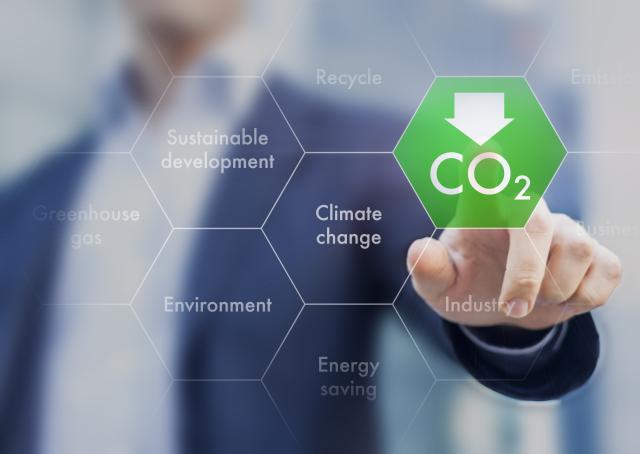
(Source: Shutterstock.com)
The push for carbon capture, utilization and storage (CCUS) is capable of creating new markets and value networks, however, the future of the “disruptive technology” depends on several key enablers, according to the executive leading carbon capture efforts at Italian major Eni SpA.
Similar to other oil majors, Eni has set out plans to cut greenhouse gas emissions and considers carbon capture projects key. Though in order to reach its emissions goals, certain enablers are needed to speed up the adoption of carbon capture and storage (CCS) projects, said Salvatore Giammetti, head of CCUS for Eni.
These enablers—which include storage site availability, transport infrastructure, regulatory framework and large-scale financing—allow for the technologies to spread, he added, referring to the business theory of professors Ron Adner and Rahul Kapoor.
“A few large-scale CCS projects have been operational for decades. Yet large-scale application of CCS is still more of a desire than a reality,” Giammetti said during the recently-held IP Week.
That could change as more attention is paid to what Giammetti described as the CCS ecosystem.
Many of the world’s largest players in oil and gas have identified carbon capture as a key part of their plans to reduce emissions. Through the technology, CO2 captured can be permanently stored in geological formations underground or used for other processes such as CO2 for EOR.
If the more than 30 CCUS facilities announced since 2017 go onstream as planned, CO2 capture capacity could triple to about 130 million tonnes per year globally, according to the International Energy Agency. Just more than half of those projects are in the advanced planning stages and represent a total investment of more than an estimated $27 billion.
Eni is moving forward with carbon capture projects as part of its plan to decarbonize all of its products and services by 2050. The company said in February that it is targeting total storage capacity for CCS projects of about 7 million tonnes per annum (mtpa) by 2030. It aims to reach 50 mtpa by 2050.
The company has plans for a carbon capture and storage hub in the Middle Adriatic offshore Ravenna, Italy. In addition, Eni plans to use the depleted Hamilton, Hamilton North and Lennox fields of the East Irish Sea to permanently store CO2 captured in northwest England and North Wales.
Giammetti added Eni is also participating with a larger consortium of oil companies in a net-zero project in the U.K.
“Some of the enabling factors are already in place for these cases, namely the availability of storage capacity in existing and well-known depleted gas reserves of oil and the possibility to revamp existing assets such as subsea pipelines and offshore structure,” Giammetti said.
“Other enablers being targeted is an absolute priority,” he said. These include having close relationships with local governments “to establish a clear and sustainable regulatory and permitting framework” and building on Eni’s natural gas storage experience and upstream monitoring “to foster the confidence and public acceptance.”
Turning to carbon capture and utilization (CCU), he said there are fewer needed enablers in the ecosystem.
“Here, for example, public acceptance and concern about safety are not usually a big issue for this [type of] project, which is also typically of smaller scale with respect to storage,” Giammetti said. “The need for large capital is less of a problem.”
That is not to say CCU is not with challenges. Supply chain development must be addressed.
Bottlenecks related to product decarbonization assessment and market placement arise, creating the need for synergies with destination markets, according to his presentation.
Giammetti pointed out that different countries are progressing at different paces, but the U.K. appears to be outpacing the others.
Regulatory frameworks may be the biggest hurdle to advancing carbon capture projects.
Though carbon capture technologies are not new, having been used for decades for EOR for example, it is now being pursued for environmental reasons, he said, prompting some authorities to start at zero in devising regulations and strategies.
For offshore storage, in particular, the most challenging aspect of advancing carbon capture is regulatory framework and incentive schemes, not engineering concerns, Giammetti added.
Just like with electric cars and renewables, “in order to speed up, to start, this new market at the beginning, an incentive scheme, a dedicated regulatory framework, is needed,” along with public acceptance, he said.

